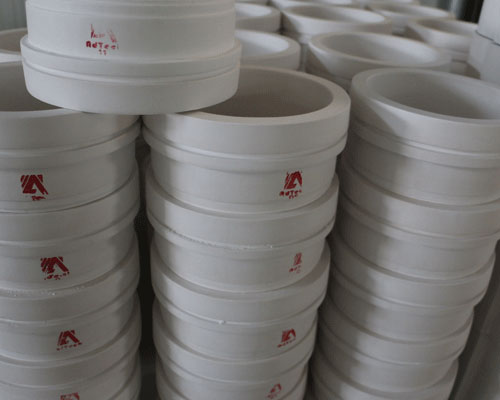The aluminum hot top casting has the advantages of excellent internal and surface quality of the ingot and easy production and operation, so the hot-top casting process is selected for the production of aluminum alloy round ingots. Under the condition that the composition of the alloy and the hot-top casting process equipment are determined, the casting process parameters are very important to produce high-quality large-diameter aluminum alloy round ingots.
The casting process parameters mainly include the casting speed, the casting temperature, and the cooling strength of the ingot. The production of high-quality aluminum alloy round ingots is actually the result of the best combination of three major parameters.
(1) Casting speed. There is a riser sleeve in the hot-top casting crystallizer, which plays a role in cooling and lubrication during the cooling process. Since the width of the riser sleeve is fixed, the cooling height of the ingot is fixed. The choice of casting speed should be based on ensuring that the aluminum alloy round ingot has good formability, which is to ensure that the aluminum alloy round ingot does not show cracks and has a good surface quality. Taking into account the above factors, coupled with the large diameter of the ingot, it is more appropriate to cast aluminum alloy round ingots at a relatively small casting speed, so the casting speed is selected to be 20-30 mm/min.

(2) Casting temperature. The selection of the casting temperature is based on ensuring that the aluminum alloy melt after release casting has good fluidity during the casting process. Because only good fluidity can ensure that the aluminum alloy melt has good filling properties.
The factors that affect the casting temperature include the flow distance of the molten aluminum (launder length), the temperature drop during the flow (launder length and ambient temperature), alloy composition, ingot specifications, and melt flow in the casting launder. Generally, the casting temperature should be 50-100 degrees Celsius higher than the liquidus temperature of the alloy. In addition, due to the large diameter of the cast aluminum alloy round ingot, during the casting process, the solidification speed of the inner and outer parts of the ingot is not uniform, and it is easy to produce loose defects. If the casting temperature is low, the central part of the ingot cannot be fed effectively and timely, and serious looseness defects may occur, which will lead to cracks in the extruded product during the subsequent extrusion process, which will seriously affect the quality. Therefore, the casting temperature is chosen to be 680-690 degrees Celsius.
(3) Cooling intensity. The cooling intensity has a great influence on the ingot structure, performance, cracking tendency, and the surface quality of the ingot. The flow rate, flow rate and temperature of the cooling water, the structure of the crystallizer and the casting temperature are the three basic factors that determine the cooling strength. In the industrialized aluminum alloy fusion casting production, for a given alloy grade and ingot specification, the crystallizer structure and casting temperature are basically fixed, and the cooling strength of the ingot can only be controlled by adjusting the flow and flow rate of the cooling water. Therefore, the cooling water pressure is selected to be 0.05 -0.10 MPa.

